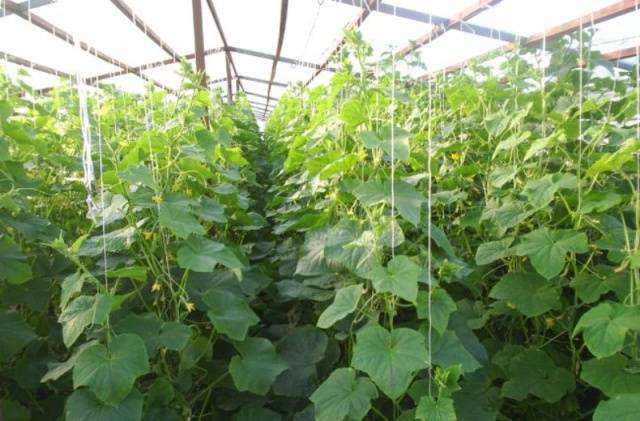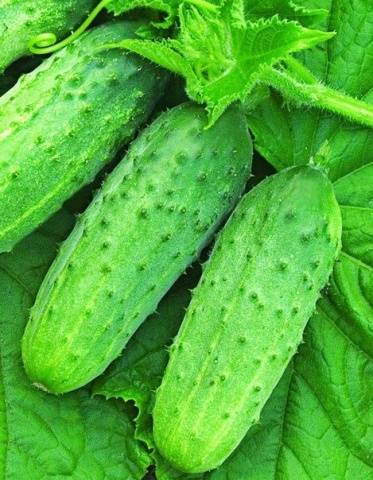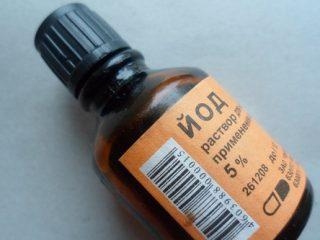Content
Cucumber is one of the most popular and favorite crops among gardeners. It can be grown both in greenhouses and in the garden, outdoors. And those who are not afraid of experiments can harvest a good harvest even on the balcony. This crunchy vegetable is ideal for winter preparations. Cucumbers store well raw and are indispensable for home canning.
There are special varieties of cucumbers for pickling, as well as their hybrids. They have thicker and crispier flesh. The peel of these cucumbers absorbs salt well. Most pickling varieties can be identified by their appearance - cucumbers from the same bush have almost the same size and shape, their rich green skin is covered with tubercles. To grow pickling cucumbers on your site, you need to choose suitable seeds.
Cucumber seeds for pickling - selection criteria
The taste of homemade pickles from your garden starts from the seeds. Their choice is determined by the climatic features of the area and growing conditions.
Today, there are the most diverse and versatile varieties in terms of cultivation that grow well not only in greenhouse conditions, but also in open ground. But the degree of yield and quality of fruits will differ in different cases. For a greenhouse, it is better to choose varieties with not very long vines that are grown on trellises. This saves space in the greenhouse and makes harvesting easier. An example of the correct location is shown in the photo:
The best varieties for pickling
It is best to start growing pickling cucumbers with high-quality seeds purchased from a trusted manufacturer. They indicate on the packaging all the information necessary for a gardener - name of the variety, growing rules, shelf life and purpose (salad, pickling, universal). Seeds that go on sale are completely ready for planting and do not require pre-treatment. More detailed information about seeds can be obtained by watching this video:
Pickling varieties of cucumbers for growing in a greenhouse
Suitable for growing in a greenhouse or film method self-pollinating or parthenocarptic varieties of cucumbers for pickling. The lack of direct sunlight does not affect the yield in any way.
Adam F1
A universal hybrid suitable for pickling and canning. The first harvest is obtained 40-45 days (depending on conditions) after sowing the seeds.
Grown on a trellis, ideal for greenhouses. It is resistant to diseases and has high yield. The fruits have a smooth cylindrical shape. They grow up to 10 cm in length and 3-4 cm in diameter. The skin is thin, dark green, covered with frequent small tubercles.
Buran F1
Fruits in 46-50 days after germination.A plant with long vines, powerful, branched. The fruits are oval-shaped, short (up to 12 cm). On the surface of the dark green peel there are often large tubercles.
Blagodatny F1
It is characterized by high yield, disease resistance and beautiful appearance. Zelentsy have a regular oblong shape, with large tubercles. The color is green, with light spots and stripes. Ideal for pickling and canning. After a delay in harvesting, the fruits do not grow in length, but turn yellow and take on a barrel-shaped shape.
Moscow dude F1
It bears fruit 45-50 days after the first shoots appear. The fruits are elongated - 9-12 cm in length and 3-3.2 cm in diameter. The color is rich green with light stripes, and there are large tubercles on the surface of the peel. Can be grown both in protected and open ground.
Tips for growing pickling cucumbers in a greenhouse
Cucumber is a rather whimsical plant. Even in greenhouse conditions, to increase productivity, it is necessary to follow some rules.
- When grown in greenhouse conditions, plants lack the carbon dioxide they need to grow. By placing containers with mullein in several places, you can achieve the optimal concentration of this substance. Mulching the soil with cow manure has the same effect.
- It is better to apply mineral fertilizers to the soil for cucumbers 10-12 days before planting.After the bush has formed, to increase productivity, it is recommended to water the plants once a week with a mixture of water and milk.
- Cucumbers are watered only in the morning. The water should be lukewarm, as its low temperature can cause powdery mildew. To do this, place a barrel of water in the greenhouse for irrigation.
The plant needs light to grow well. In greenhouse conditions, optimal lighting is achieved with the help of additional lamps.
Pickling varieties for open ground
Bee-pollinated varieties of pickling cucumbers with long vines that are located directly on the ground are suitable for growing in open ground. This allows the plant to maintain the required level of moisture in the soil. They are highly resistant to diseases and low temperatures.
Nezhinsky
This variety is considered the leader among pickling cucumbers in terms of its taste. It is recommended for growing in wide beds, as this cucumber has very long (more than 2 m) vines. Zelentsy have an even shape and beautiful color. The peel is covered with sparse tubercles.
Fontana F1
The harvest can be harvested 45-52 days after the seeds are sown. The fruits are medium-sized, covered with tubercles, the flesh is fragrant and dense.
Competitor
Mid-season variety with high yield. It has good seed germination and high resistance to powdery mildew. The fruits are bright green in color with frequently spaced small tubercles and grow up to 12 cm.
Muromsky
This variety is suitable for growing in shady areas. The fruits are light green in color, have an even, beautiful shape with crispy flesh and are suitable for pickling.
Barrel pickling
This hybrid has fragrant and crispy flesh.When salted or canned, it does not lose its taste. The variety is considered mid-season - 45 days after sowing the first harvest can be harvested.
Lovers of delicacies will appreciate the variety Parisian gherkin. Due to their small size (up to 5 cm in length), cucumbers are quickly pickled and have a pleasant crunch. Small plants with medium branching can be grown even on the balcony. With proper care they have good productivity.
Useful tips for growing cucumbers
In open ground conditions, plants are more susceptible to external influences that can affect their growth. Lower temperatures, wind, pests - all these factors negatively affect not only the appearance of plants, but also their productivity. Knowing some secrets, you can achieve a guaranteed good result.
In order to protect the cucumbers from the wind, plants can be planted nearby that will act as a curtain - corn, sunflower. Tall plants create a comfortable microclimate and can be used as a support for climbing varieties. The photo shows that corn and cucumbers do not interfere with each other at all.
- To attract bees, some gardeners spray their plants with a sugar solution. This can be avoided if you plant calendula next to the cucumber bed. It blooms at the same time as the cucumber and will help attract these insects for pollination.
- Cucumbers are not planted next to nightshade crops (tomatoes, potatoes). They require different growing conditions. Spicy herbs and fragrant greens can also negatively affect productivity.
- It is useful to plant legumes (low-growing beans, beans, peas) between the cucumbers.The roots of these plants retain nitrogen in the soil. Therefore, after harvesting, it is recommended not to pull out the plants, but to trim them.
- Cucumbers are very sensitive to cold weather. When growing outdoors, you should always keep on hand material that can protect the plants in the event of a sudden cold snap. Even in the process of forming the beds, you need to set up special supports for the covering material.
Cucumbers intended for pickling require regular monitoring of soil moisture during the fruiting period. If there is insufficient moisture in the fruit, bitterness develops, which makes cucumbers unsuitable for canning and pickling.




















